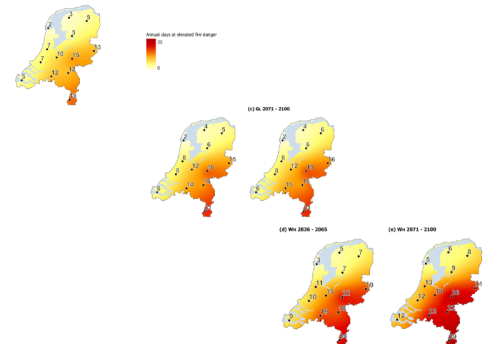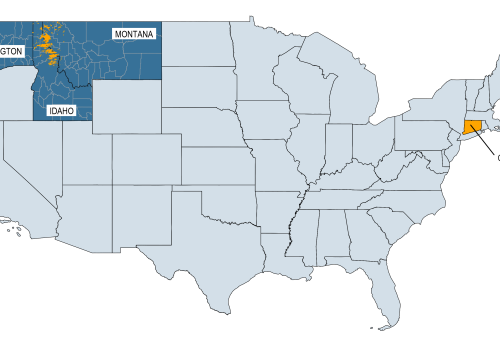
Blog post by Kerryn Little.
Wildfire danger is defined as the combination of factors affecting the initiation, spread, and ease of control of a wildfire (Natural Resources Canada, 2021). It is influenced by characteristics of fuels, topography, weather, and people. By understanding the underlying controls on wildfire danger, we can develop models that better reflect real-life systems.
Perhaps due to the development of wildfire danger assessments in traditionally fire-prone regions like Canada, USA, and Australia, wildfire danger is typically considered at the coarse spatial resolutions that existing tools have been designed for. However, wildfire danger is also a relevant concept at finer spatial resolutions, and this is particularly relevant in the context of emerging fire-prone regions, like the UK, where fine resolution landscape heterogeneity can be relevant for fire behaviour (Matthews et al., 2019; Belcher et al., 2021).
Developments in the availability of data products and increasing complexity of wildfire management needs have led to increasing recognition of the need for greater flexibility in wildfire danger assessments, acknowledging that different spatial scales may be required for different user needs, i.e., assessing wildfire danger is not a ‘one size fits all’ approach. Considering controls at multiple spatial scales provides a more holistic understanding of the processes driving wildfire danger. Such an approach will aid the development of functional wildfire danger assessments that better reflect real-life processes. Furthermore, understanding the benefits and pitfalls of applying systems at particular spatial scales will help to use fit-for-purpose systems to answer research questions, make management decisions, and communicate wildfire danger.
Fuel moisture, i.e., the amount of water in vegetation as a percentage, is a key component of wildfire danger, influencing whether an ignition will occur and spread. It is generally represented by regional estimates, but in reality is variable across landscapes (Nyman et al., 2018). A recent paper, Landscape controls on fuel moisture variability in fire-prone heathland and peatland landscapes, measured the extent of Calluna vulgaris (heather) fuel moisture content variation across a peatland/heathland landscape — the North Yorkshire Moors in the UK.
The paper found that cross-landscape fuel moisture variation led to differences in the availability of live fuels for wildfire spread and vulnerability of the organic layer to smouldering combustion across the landscape. On the same day, some parts of the landscape may burn with high severity, while others may not ignite at all. This knowledge could be important when deciding where to focus suppression activities or selecting burn locations to maximise successful ignitions and prevent out-of-control fires. It is clear from the results that regional estimates of fuel moisture will not capture local spatial variability driven by either landscape or micrometeorological factors.
The paper also examined what controls spatial fuel moisture variation, finding that landscape factors (soil texture, canopy age, hillslope position, and aspect) were more important than weather variables. Existing fuel moisture models may therefore be improved by including landscape characteristics.
The paper concludes with the following quote, which the authors hope will prompt greater flexibility within wildfire danger research and seek to build on existing tools to meet user needs rather than being constrained by them.
“Our work thus sets the scene for a new avenue of landscape-scale wildfire danger research to support regional scale predictions, recognising that fire danger ratings and fire behaviour models may require different levels of detail for the different functions they perform.”
Bibliography
Belcher et al. 2021. UK wildfires and their climate challenges. Expert Led Report prepared for the third Climate Change Risk Assessment. https://www.ukclimaterisk.org/wp-content/uploads/2021/06/UK-Wildfiresand-their-Climate-Challenges.pdf
Little, K., Graham, L. J., Flannigan, M., Belcher, C. M., and Kettridge, N. 2024. Landscape controls on fuel moisture variability in fire-prone heathland and peatland landscapes. Fire Ecology. 20, 14.
Matthews, S., Sauvage, S., Grootemaat, S., Hollis, J., Kenny, B., and P. Fox-Hughes. 2019. Implementation of models and the forecast system for the Australian Fire Danger Rating System. https://www.researchgate.net/publication/332900268_Implementation_of_models_and_the_forecast_system_for_the_Australian_Fire_Danger_Rating_System
Natural Resources Canada. 2021. An overview of the next generation of the Canadian Forest Fire Danger Rating System. Information Report GLC-X-26. Online: http://cfs.nrcan.gc.ca/publications?id=40474
Nyman, P., D. Metzen, P.J. Noske, P.N.J. Lane, and G.J. Sheridan. 2015. Quantifying the effects of topographic aspects on water content and temperature in fine surface fuel. International Journal of Wildland Fire. 24: 1129–1142.



Leave a Reply